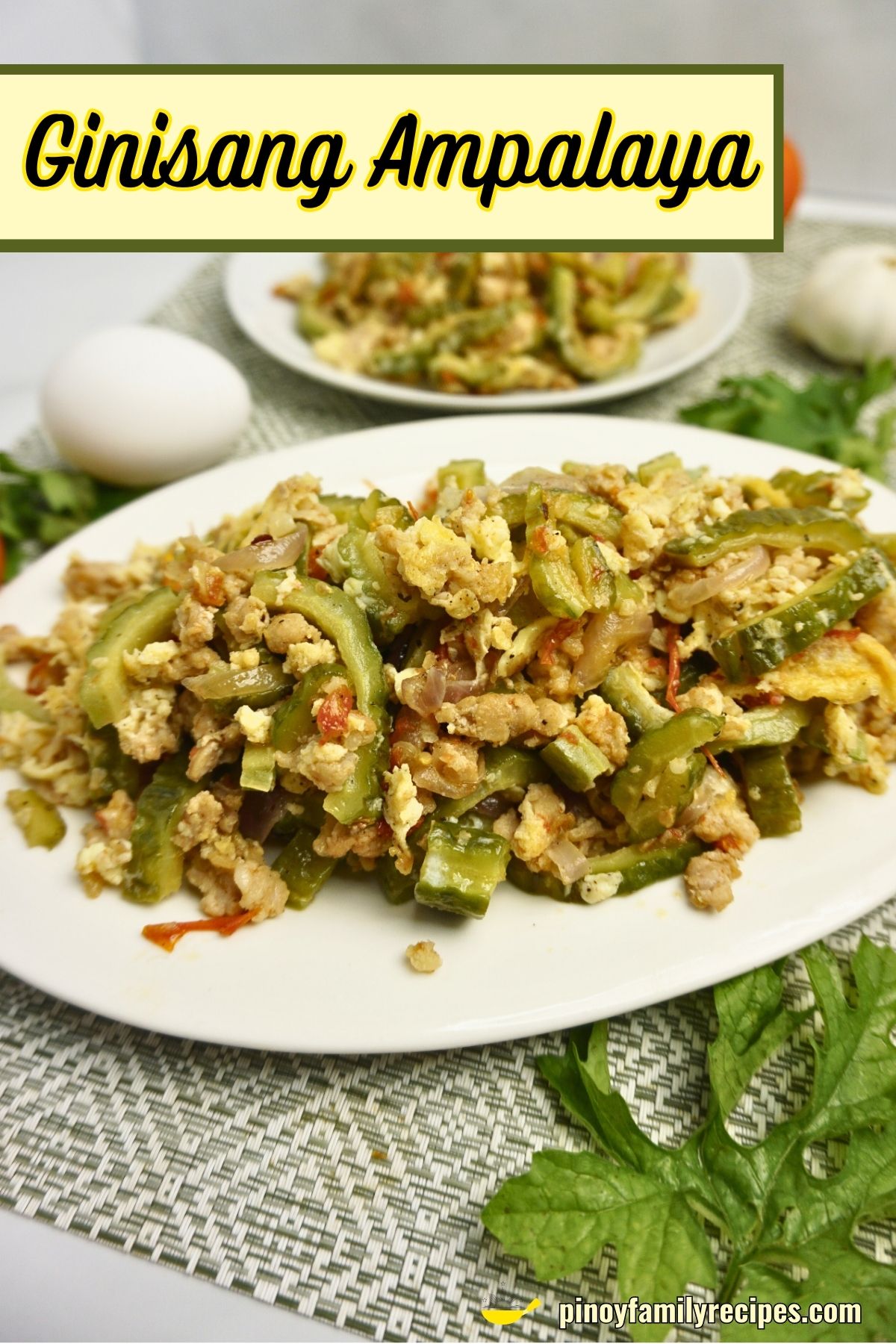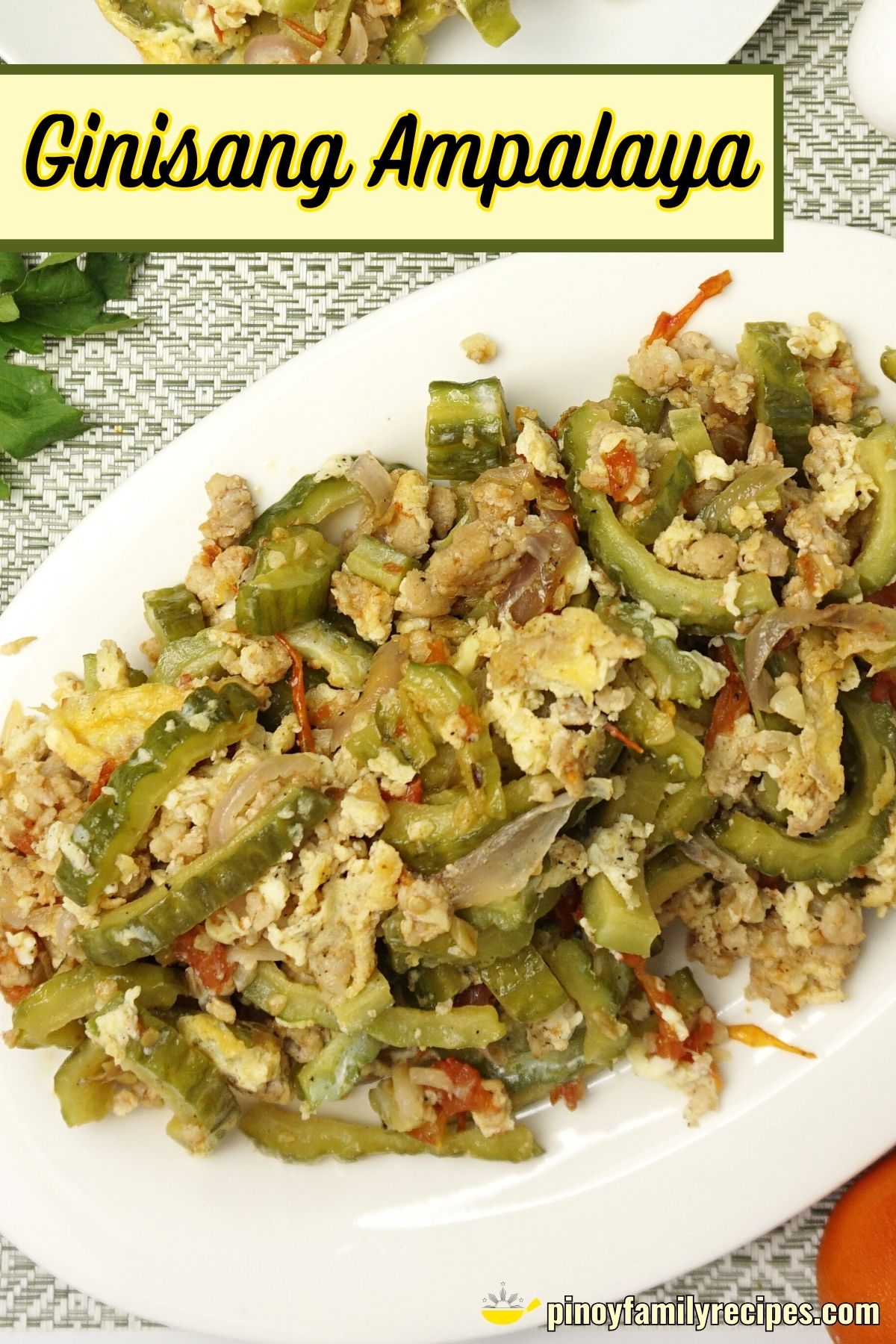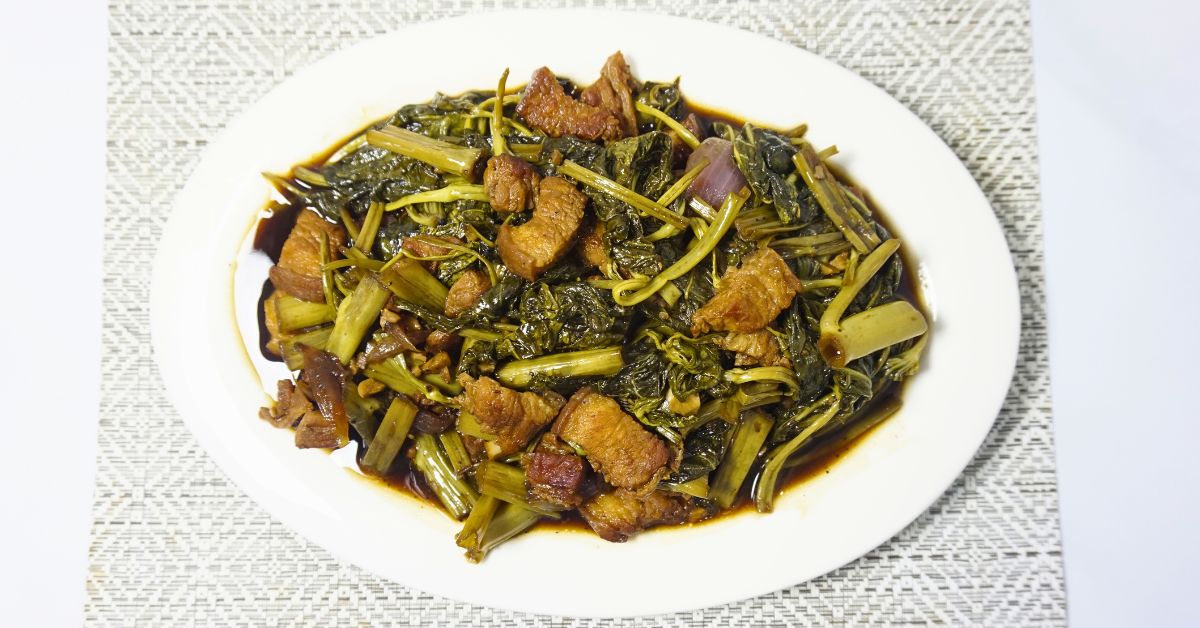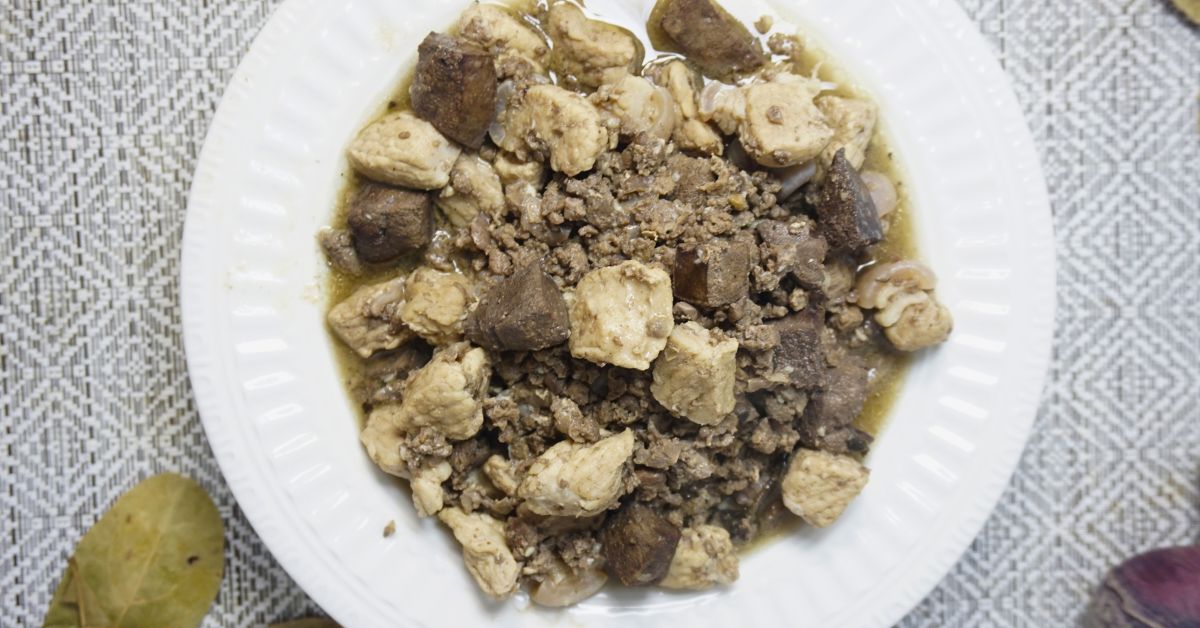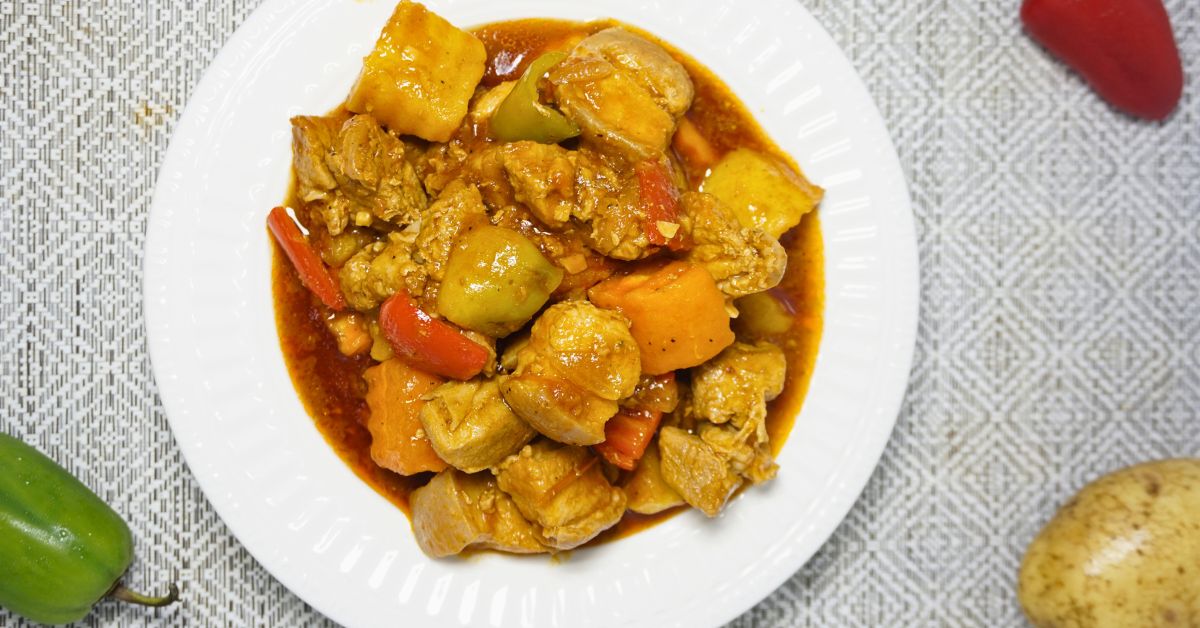
You are only a real Filipino if you have tried the taste of an ampalaya or what Google knows as Bitter Melon.
I know! Almost every kid hated eating this dish! I remember what my mom used to tell me when she would serve this on our lunch.
“Kumain ka nito. Masustansya yan! Para lumaki ka kaagad!”
(“Eat this. It’s nutritious! So you can grow quickly!”)
And of course, just like other kids who hated bitter food, I would just end up crying… while eating!
But now that I have my son, I was determined to create a version he and everyone would enjoy. I knew that my secret to success was carefully preparing the ampalaya, reducing its bitterness while keeping the dish’s unique flavor intact.
Ginisang Ampalaya, also known as sautéed bitter melon, is a popular Filipino dish that combines the slightly bitter flavor of ampalaya with the savory goodness of ground pork and the richness of scrambled eggs. This delightful combination of ingredients creates a symphony of flavors that will tantalize your taste buds.
Whether you’re a fan of bitter melon or looking to try something easy and less complicated, my simple recipe is a must-try.
Let’s get cooking!

Did You Know?
In the Philippines, ampalaya is often called the “bitter gourd” because of its slightly bitter taste. Despite its bitterness, it’s a beloved vegetable and a popular ingredient in many Filipino dishes, known for its unique flavour and health benefits.
Ampalaya is not just a staple in Filipino cuisine; it’s also believed to have health benefits. It’s considered a natural remedy for various ailments and is known for its potential to help regulate blood sugar levels. Many Filipinos enjoy it not only for its taste but also for its potential health-boosting properties.
How To Prepare Ampalaya Before Cooking?
The secret to reducing the bitterness of ampalaya is proper preparation.
Bitterless ampalaya means a clean plate after every meal!
Here’s how I do it:
Wash the Ampalaya:
Start by thoroughly washing the ampalaya under running water. This will remove any dirt or debris on the surface.
Cut the Ampalaya:
Cut the ampalaya in half lengthwise, exposing the inside.
Remove the Seeds and Pith:
Use a spoon to scoop out the seeds and the white pith from the center of the ampalaya. These are the parts that contribute most to its bitterness.
Slice or Dice as Needed:
Depending on your recipe, you can slice the ampalaya into thin, half-moon-shaped slices or dice it into smaller pieces. The thickness of the slices can affect the final texture of the dish. Thin slices are slightly crunchy, while thicker slices can be softer.
But I prefer having them thinly sliced.
Salt the Ampalaya:
To further reduce the bitterness, sprinkle a generous amount of salt over the ampalaya slices. Use enough salt to cover the ampalaya slices evenly.
Massage the Salt In:
Gently massage the salt into the ampalaya slices with your hands. This will help draw out the bitter juices.
Let It Sit:
Place the salted ampalaya in a bowl and let it sit for 15-20 minutes. During this time, you’ll notice that the salt will draw out bitter liquid from the ampalaya.
Rinse and Drain:
After the resting period, rinse the ampalaya slices under cold running water. This step is essential to remove the salt and any bitterness extracted.
Squeeze Out Excess Water (Optional):
Suppose the ampalaya is still too bitter or too moist after rinsing. In that case, you can gently squeeze the slices to remove excess water. However, be careful not to crush the slices in the process.
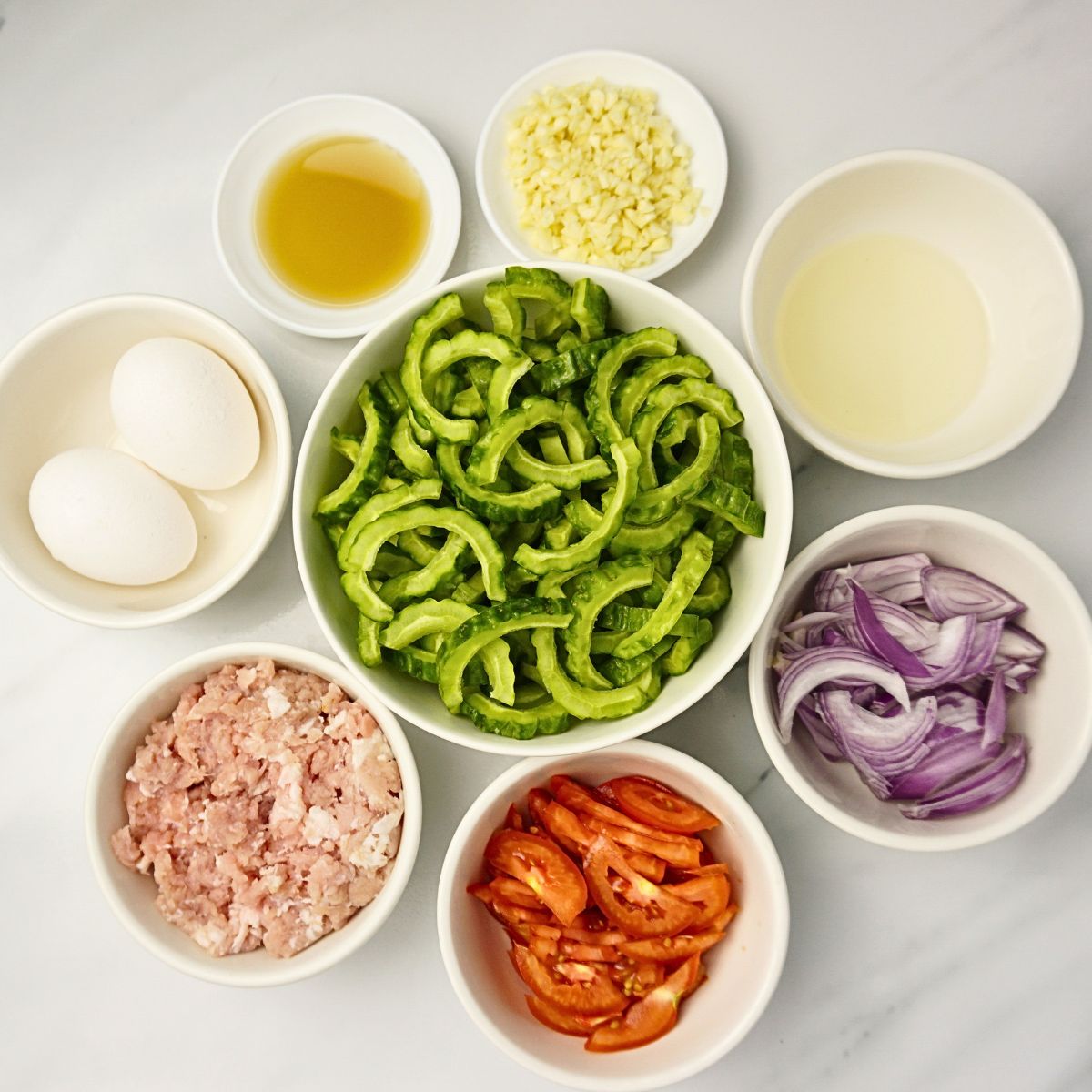
Ginisang Ampalaya Ingredients
Ampalaya (Bitter Melon): Ampalaya, or bitter melon, is that green, bumpy vegetable with a distinct bitter taste. It’s a staple in many Asian dishes, known for its health perks like aiding digestion and controlling blood sugar.
Cooking Oil: We’ll need some cooking oil, usually vegetable or canola, to sauté our ingredients. It helps in cooking everything evenly and adds a bit of flavor.
Garlic: Mince up some garlic cloves. They add a strong, savory kick that really brings out the flavors in the dish and are great for your immune system too.
Onion: Chop up a medium onion. Onions give a sweet and tangy base flavor when cooked and are essential for building the dish’s overall taste.
Ground Pork: Ground pork will be our main protein, adding a rich, hearty flavor and a nice, meaty texture to the dish.
Tomatoes: Chop up some medium tomatoes. They add a touch of acidity and sweetness, which helps balance the bitterness of the ampalaya and keeps everything moist.
Water: A bit of water helps adjust the dish’s consistency, ensuring all ingredients cook evenly and the flavors meld together nicely.
Fish Sauce (Patis): Fish sauce is our secret weapon for depth and umami. It’s salty and savory, giving the dish a unique, authentic flavor.
Eggs: Beaten eggs will bring everything together with a smooth, rich texture, binding all the ingredients nicely.
Salt and Pepper: Finally, we’ll season with salt and pepper to taste. These basics enhance and balance the flavors, making sure our dish is perfectly seasoned.
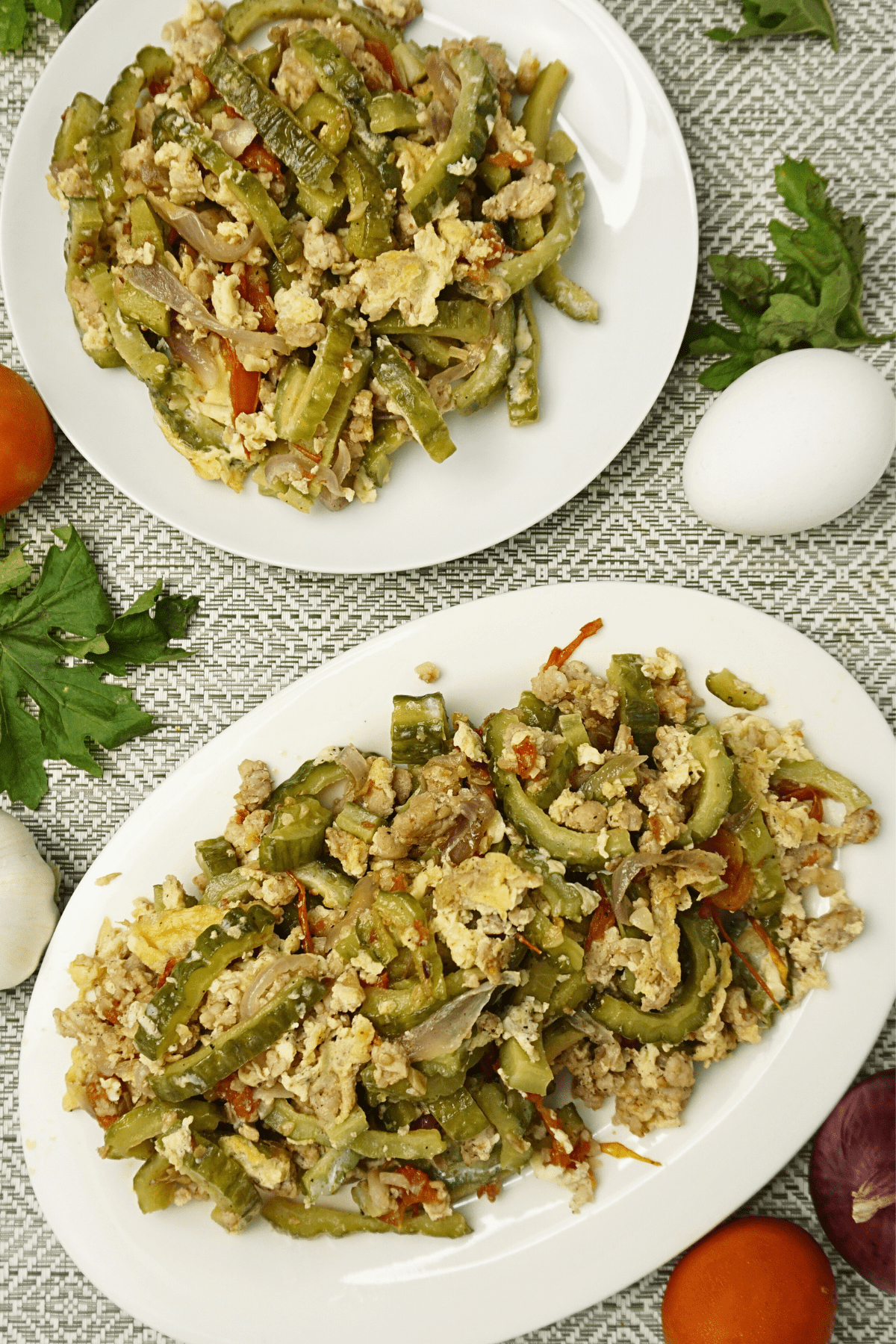
How To Cook Ginisang Ampalaya
Prepare the Ampalaya
First, we need to wash the ampalaya thoroughly. Cut it in half lengthwise and use a spoon to scoop out the seeds. Then, slice the ampalaya into thin half-moons. If you want to reduce the bitterness, place the sliced ampalaya in a bowl, sprinkle with salt, and mix well. Let it sit for about 15-20 minutes. After that, rinse the ampalaya under running water and drain it well. This step is optional if you like a more bitter taste.
Sauté the Aromatics
Next, heat the cooking oil in a pan over medium heat. Once hot, add the minced garlic and sauté until it’s fragrant. Then, add the chopped onion and cook until it becomes translucent.
Cook the Pork
Now, add the ground pork to the pan. Cook it until it’s browned and no longer pink, breaking it up with a spoon as it cooks.
Add the Tomatoes
After that, add the chopped tomatoes and cook them until they soften and release their juices, which should take about 2-3 minutes.
Cook the Ampalaya
Add the sliced ampalaya to the pan and stir-fry for about 2-3 minutes. Then, pour in the water, cover the pan, and let it cook for about 5 minutes. You want the ampalaya to be tender but not mushy.
Season and Add Eggs
Add the fish sauce and season with salt and pepper to taste. Stir well to combine everything. Pour the beaten eggs over the ampalaya and let it set for a few seconds. Then, gently stir to mix the eggs with the pork and vegetables, cooking until the eggs are fully set and cooked through.
Serve the Dish
Finally, transfer your ginisang ampalaya with ground pork to a serving dish. Serve it hot with steamed rice. Enjoy your meal!
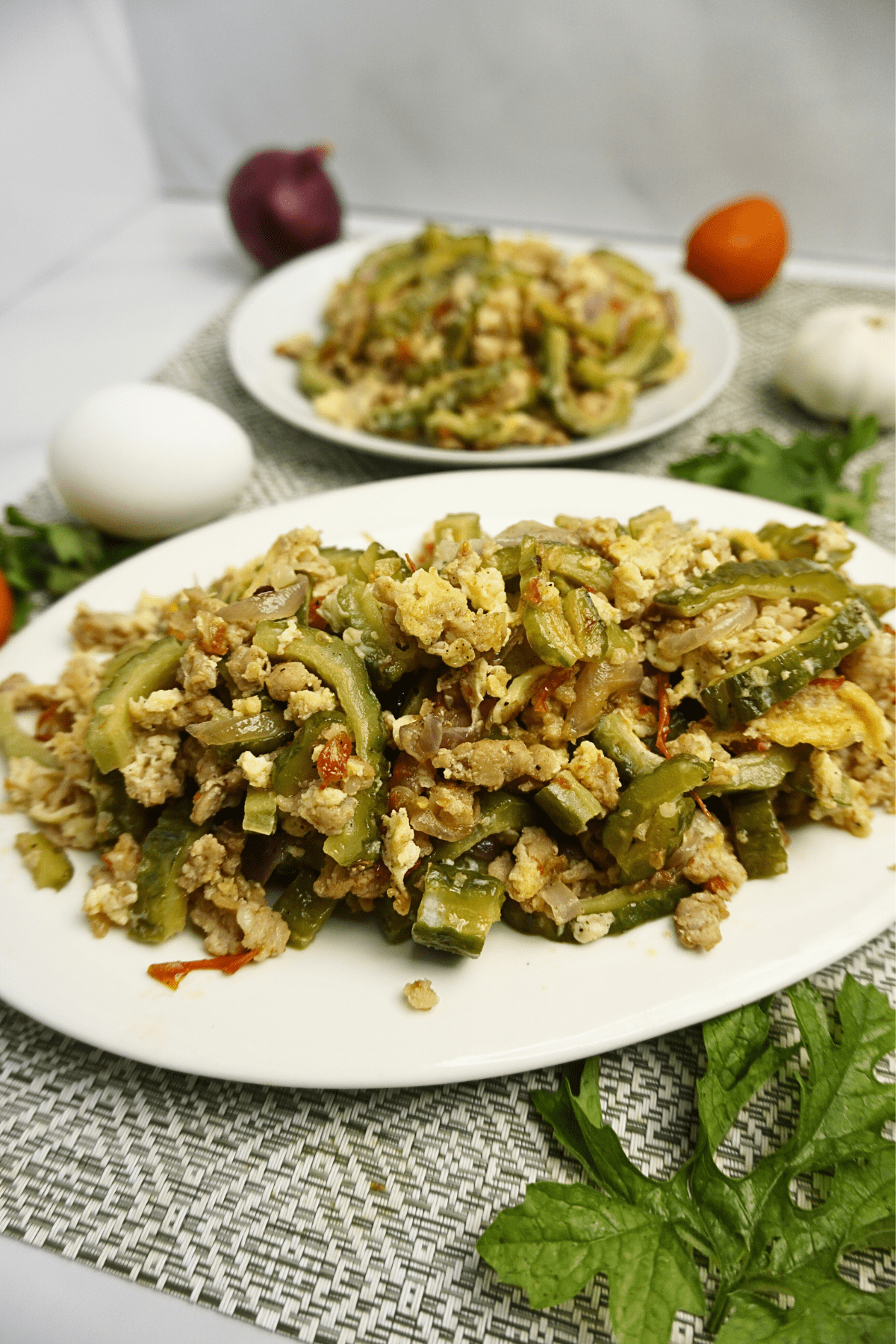
Perfect Partner for Ginisang Ampalaya
- Fried Bangus (Milkfish): Crispy fried bangus adds a delightful crunch and savory flavor that compliments the slight bitterness of Ginisang Ampalaya, creating a satisfying combination of textures and tastes.
- Fried Chicken: The crispy exterior and tender meat of fried chicken provide a satisfying textural contrast to the soft ampalaya, while the savory flavors of the chicken enhance the unique taste of ampalaya.
- Fried Tilapia: Golden-fried tilapia offers a crispy counterpart to Ginisang Ampalaya, balancing the softness of the ampalaya and pairing well with its slightly bitter notes.
- Lechon Kawali: Crispy deep-fried pork belly in Lechon Kawali provides a rich, savory crunch that complements the bitterness of ampalaya, offering a delicious and satisfying contrast.
- Fried Tofu (Tokwa’t Baboy): Crispy, golden tofu cubes add a delightful crunch to your meal while allowing the unique taste of ampalaya to shine, creating a texturally satisfying and delicious combination.
Frequently Asked Questions
The ampalaya should be tender but still slightly crisp, not mushy, after cooking for about 5 minutes.
Adding eggs is optional, but they help bind the ingredients together and add a rich texture to the dish.
Yes, you can skip this step if you prefer the more intense, natural bitterness of ampalaya.
It’s not recommended to freeze this dish as the texture of the ampalaya and the eggs might change when thawed and reheated.

Ginisang Ampalaya (Sautéed Bitter Melon)
Ingredients
- 2 tbsp Cooking Oil
- 8 cloves Garlic (minced)
- 1 piece Onion medium (chopped)
- 250 grams Ground Pork
- 2 pieces Tomatoes medium (chopped)
- 2 pieces Ampalaya / Bitter Melon medium (sliced into thin half-moons)
- 1/4 cup Water
- 1 tbsp Fish Sauce / Patis
- 2 pieces Eggs large(beaten)
- Salt and pepper to taste
Instructions
- Wash the ampalaya thoroughly. Slice the ampalaya in half lengthwise and scoop out the seeds with a spoon. Slice the ampalaya into thin half-moons.
- To reduce bitterness, place the sliced ampalaya in a bowl, sprinkle with salt, and mix well. Let it sit for about 15-20 minutes. Rinse the ampalaya under running water and drain well. This step is optional if you prefer a more bitter taste.
- Heat the cooking oil in a pan over medium heat. Add the minced garlic and sauté until fragrant. Add the chopped onion and sauté until translucent.
- Add the ground pork and cook until it’s browned and no longer pink, breaking it up with a spoon.
- Add the chopped tomatoes and cook until they soften and release their juices, about 2-3 minutes.
- Add the sliced ampalaya to the pan and stir-fry for about 2-3 minutes. Pour in the water, cover, and let it cook for about 5 minutes, or until the ampalaya is tender but not mushy.
- Add the fish sauce and season with salt and pepper to taste. Stir well to combine.
- Pour the beaten eggs over the ampalaya and let it set for a few seconds. Gently stir to combine the eggs with the pork and vegetables, cooking until the eggs are fully set and cooked through.
- Transfer the ginisang ampalaya with ground pork to a serving dish. Serve hot with steamed rice.
Video
Notes
- Serve Ginisang Ampalaya hot with steamed rice. It pairs well with grilled or fried fish.
- Ampalaya is rich in vitamins and minerals and is known for its health benefits, including blood sugar regulation. Despite its bitterness, it’s a nutritious addition to your diet.
